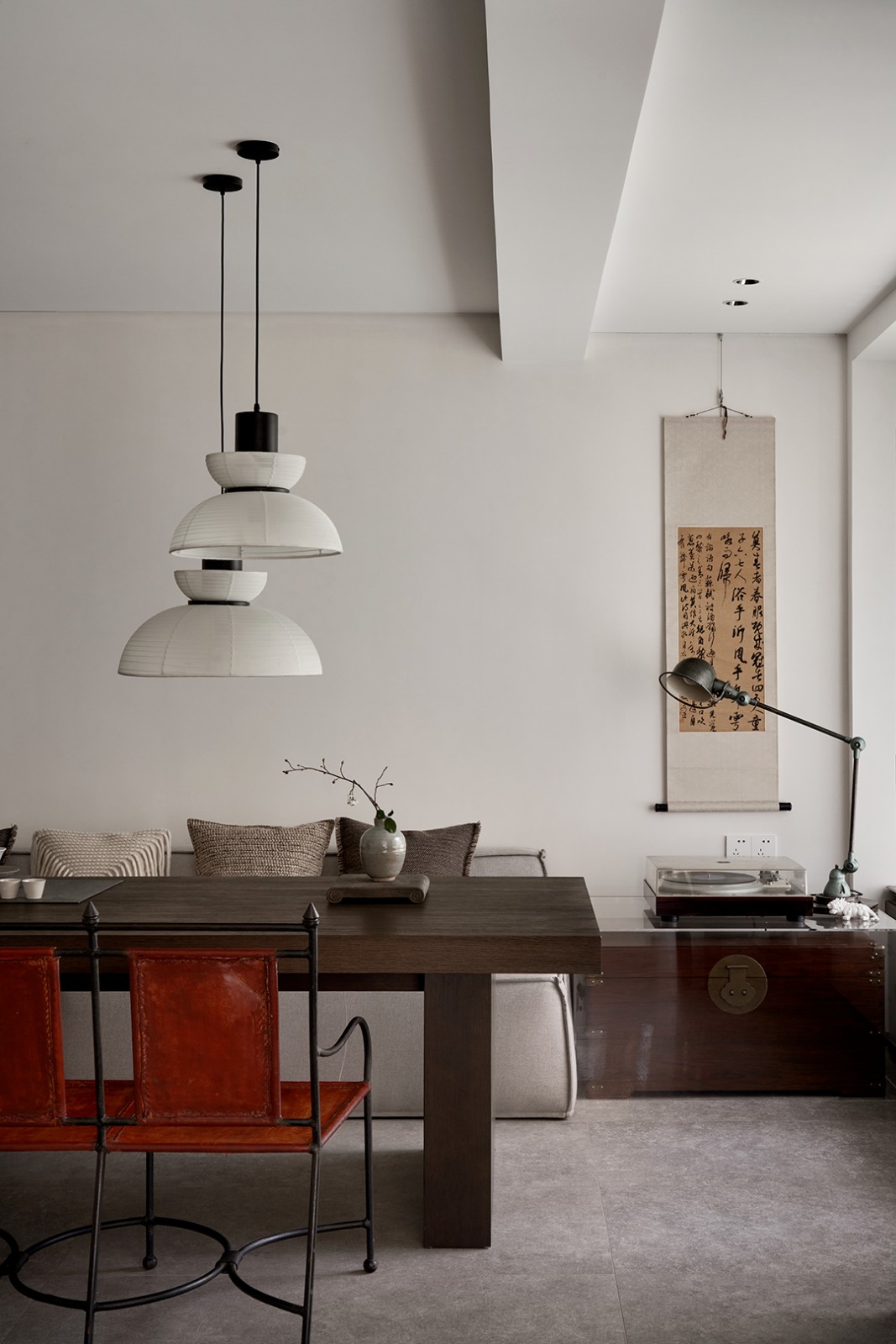Igualada N1 Jaime Prous + Damián Ribas
2013-12-04 01:00
在建筑上,该项目由三个立方体组成,这些立方体的排列方式使它们之间产生了庭院,从而照亮了不同的房间和空间。
Architecturally, the project is articulated by three cubes, these cubes are arranged in such a way that they generate courtyards between them, which serve to illuminate the various rooms and spaces.
这些立方体是功能程序中比较静态的部分,即客厅、厨房和卧室。这些书有一个石头和坚实的特点,窗户被认为是穿孔。
These cubes house the more static part of the functional program, that is, living room, kitchen and bedrooms. These volumes have a stone and solid character, where windows are perceived as perforations.
来自卡普里的白色石头是为这些容器选择的材料。随着一个明显的无政府主义,但广泛的研究展开,它有助于增加意识的块体,并减少了所需的时间切割石头。
White stone from Capri was the material chosen for these containers. With an apparently anarchic but extensively studied unfolding, it serves to increase the sense of massiveness, and decreases the time required for cutting the stone.
这三个空间是由一个平面的,轻的混凝土板连接,这提供了更多的构造形象的建议,是一种封闭的门廊。由于这些原因,窗户没有框架,直接嵌入从外部进入的石墙。
These three volumes are connected by a flat, light concrete slab, that gives the more tectonic image of the proposal and is a sort of enclosed porch. For these reasons, windows have no framing and are embedded directly into the stone walls that come in from the outside.
这个平板是为了一个更动态的用途,即各卷之间的循环。
This flat slab is intended for a much more dynamic use, the circulation between volumes.
构成这座房子的第二个要素是建筑布局所产生的庭院。庭院因其位置和功能的不同而具有不同的特征和修饰。
The second element that comprises this house are the courtyards arising from the layout of the volumes. The courtyards have different characters and finishes, depending on their position and function.
楼梯是通过一个垂直庭院照明的,该庭院通向地下室,并覆盖在构成正面的同一块白色石头中。厨房俯瞰着一个带遮阳的遮蔽庭院。大厅通过另一个带有玻璃墙和反射池的庭院被照亮,以赋予它一个空灵的特征。院子里点亮了另一个院子,院子里充满了一种绿树成荫的植物-黄花草(Cornussanginea)。
The staircase is lit through a vertical courtyard that leads to the basement and is clad in the same white stone that makes up the facade. The kitchen overlooks a sheltered courtyard with a sunshade. The lobby is lit through another courtyard with glass walls and a reflecting pool in order to give it an ethereal character. The courtyard is lit through another courtyard filled with cornus sanginea, a type of plant with a very green stem.
构成这座房子的第三个也是最后一个元素是门廊,它允许将内部投射到外部,同时允许用户对外部空间进行殖民。与客厅的体积相连的门廊与大厅有着相同的意图,即是一层混凝土板,外观非常轻盈。
The third and final element that comprises this house is the porch, which allows to project the interior to the exterior while allowing users to colonize the exterior space. The porch attached to the volume of the living room has the same intention as the hall, to be a slab of concrete with a very light appearance.
除了这个门廊,房子还有许多其他不同的门廊,以适应他们保护的地区的需要:通道,房间.
Besides this porch, the house has many other different porches that are adapted to the needs of the area they protect: access, rooms ...
门廊,庭院,卷,以及光和影是真正的材料组成这座房子,旨在帮助和使用户更好的体验。
Porches, courtyards, and volumes along with light and shadow are the true materials that make up this house, which intend to help and make a better experience for its users.
 举报
举报
别默默的看了,快登录帮我评论一下吧!:)
注册
登录
更多评论
相关文章
-

描边风设计中,最容易犯的8种问题分析
2018年走过了四分之一,LOGO设计趋势也清晰了LOGO设计
-

描边风设计中,最容易犯的8种问题分析
2018年走过了四分之一,LOGO设计趋势也清晰了LOGO设计
-

描边风设计中,最容易犯的8种问题分析
2018年走过了四分之一,LOGO设计趋势也清晰了LOGO设计




















































































